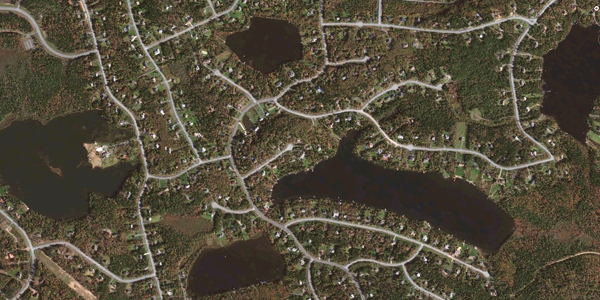
HALIFAX – The Ecology Action Center’s Jen Powley has been busy since she presented the idea of an HRM greenbelt at Dalhousie’s School of Planning Imagine Conference in March. There, Powley positioned the potential greenbelt as providing common ground among residents and a mechanism to achieve the goals and objectives laid out in the Regional Plan.
On May 25, 2011 — a short two months later — Powley took centre stage yet again (with other project partners) to announce the formation of Our HRM Alliance. The Alliance aims to shine light on the social, environmental, and financial costs associated with sprawl, while proposing mechanisms to curb it. In addition to the establishment of a greenbelt, this would mean changes to the commercial tax structure. The proposed changes would go a long way in strengthening existing community centres by encouraging reinvestment and better defining growth boundaries within HRM. “We want to see liveable suburbs and viable town centres, including downtown Halifax,” says Powley in a recent press release for the Alliance.
With the Regional Plan about to undergo its 5-year review, the Alliance’s timing is well-planned. They intend to act as a united voice to push for change to current development patterns, which they suggest are occurring at the expense of existing urban and suburban centres, downtown Halifax, as well as the general health of HRM residents. This range of potential impacts is reflected in the diversity of the Alliance’s member organizations. As of the first of June, the Alliance has brought together 20 community groups, including the Ecology Action Centre, Downtown Halifax Business Commission, Heart and Stroke Foundation of Nova Scotia, Sackville Rivers Association, Dalhousie Office of Sustainability, the Atlantic Chapter of the Canada Green Building Council, and the YWCA Halifax (click here for the full list of members).
Speaking as one, the Alliance will help bring balance to the Regional Plan review discussions — where easily quantified measures such as population increases, job growth and housing starts can often overshadow both the social and spatial consequences that accompany such changes — and propose possible alternative scenarios. But while it is easy to grasp how compact communities can reduce servicing costs, increase tax revenue, and encourage more active lifestyles, it is less obvious whether residents, real estate developers, business groups and HRM Council and Staff can agree on the location, implementation and overall effectiveness of greenbelt, growth boundaries or other rigid planning mechanisms.
Fortunately, we won’t have to wait long to learn more about what Our HRM Alliance intends on bringing forward: they plan to hold a mapping workshop in late June to examine just how such changes may affect the region. Stay tuned!
Image from Google Earth via Spacing Flickr Pool.
